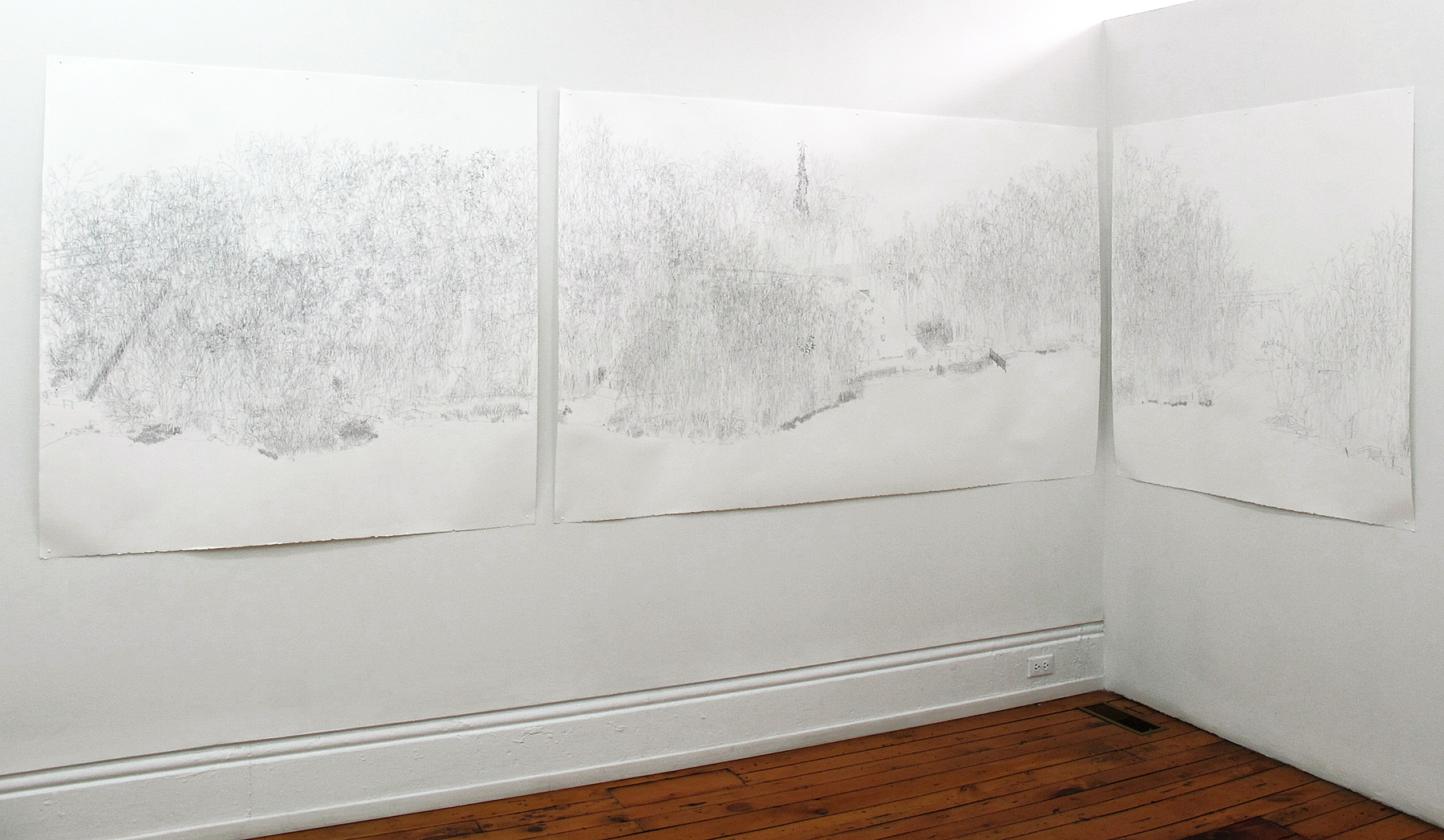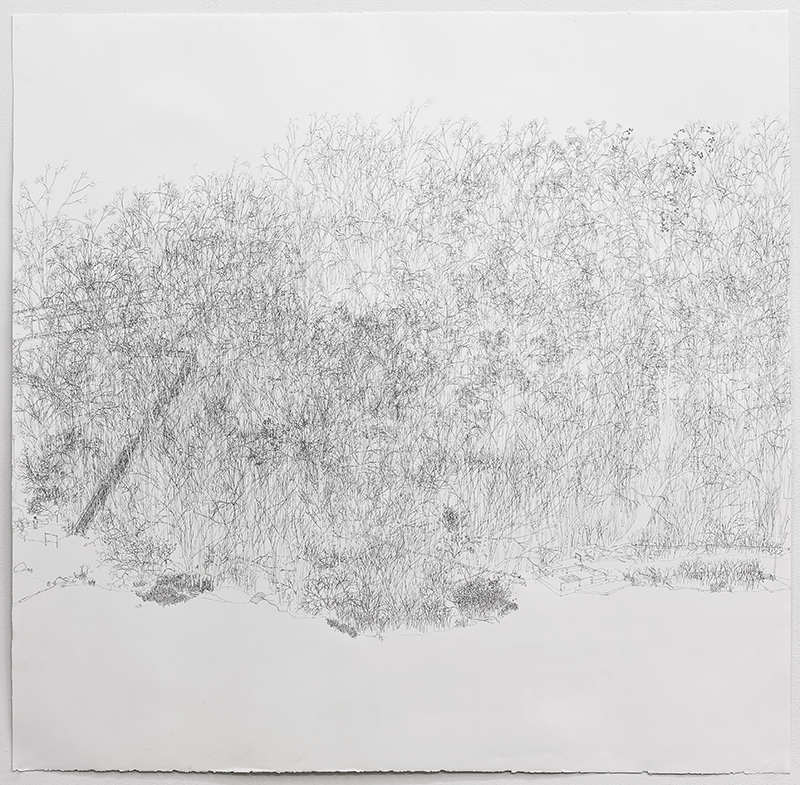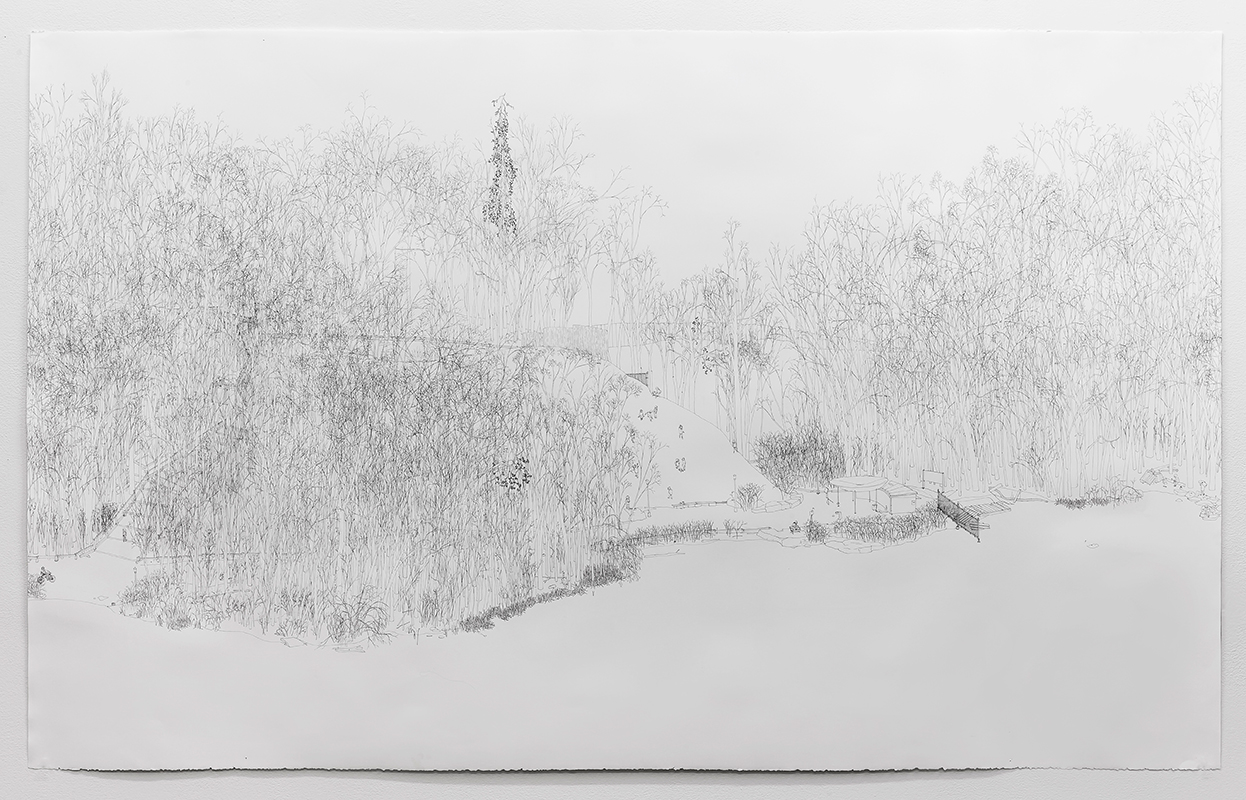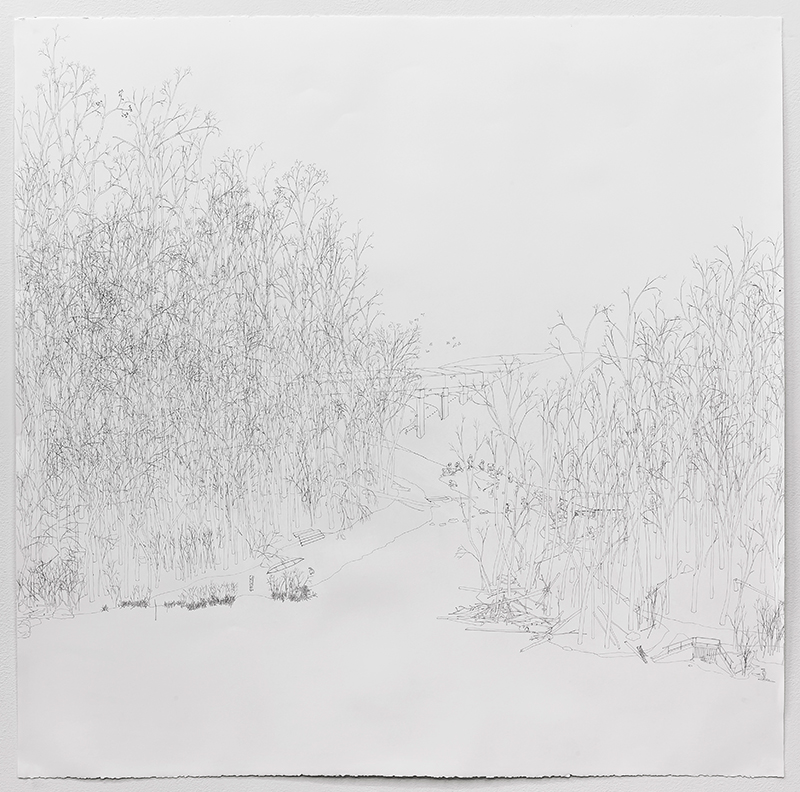Ravine World
Olia Mishchenko
June 6 - July 5, 2014
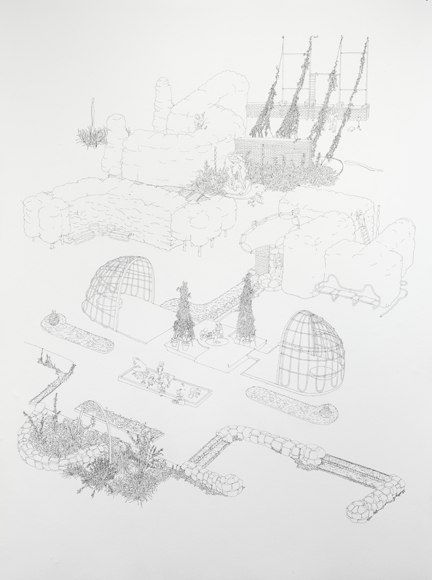
"Ravine World is a new manifestation of the artist’s abiding interest in neglected, informal places where people loiter, play, contemplate, and build. The ravine is the first major landscape form to join Mishchenko’s growing inventory of back alleys, rear yards, forgotten stadia, disused fair grounds, temporary camps, obscure pavilions, and extravagant, functionless structures. Freedom is the common denominator of such spaces, and Mishchenko’s work identifies the ravines as the obstructive, redemptive, and liberating pole in the spatial dialectics of Southern Ontario.
"Mishchenko is an acute observer and interpreter of this fluvial geomorphology. She is aware of the landscape’s grand natural forms, but her interest in ravine spaces is driven by something more than the conventional regard for natural beauty. She seems to appreciate ravines for the way they interrupt the street grid from below, for their formlessness and general resistance to spatial rationalization, in short, as obstacles to suburban development. She aspires to convey the spatial experience of being in a ravine, and pays particularly close attention to the ways in which ravines are occupied and utilized. Ingenuity is a key theme of Mishchenko’s art, so she often focuses on the spatial inventions ravines inspire. Viaducts, bridges, special forms of ramps and stairs, unexpected conduits, pumping stations, and forlorn pavilions appear in her drawings, all seen through a dense web of trees. The artist uses the term ‘world’ presumably to underscore the spatial autonomy she sees in ravines; it implies a complete system, one that operates self-sufficiently, and by different rules.
“The viewer’s standpoint is suspended, vaguely over the river, with the shoreline extending into the wrap-around periphery on each side, or simply fading out where the focus is on one face of the ravine. The artist has omitted any rendering of the river itself and the sky overhead. Where, in a traditional landscape painting or drawing, atmosphere would have been depicted via nuances of light in air and water, Mishchenko pursues a tectonic form of depiction that focuses firmly on material things. This approach leaves the weather and even the season indeterminate. Only the overlapping of tree branches provides a hint of tone or atmosphere, yet even in those parts of the drawing (which could be understood as a sort of meta-hatching) all appears orderly and complete. Human figures and tectonic constructions play equal parts within this ambiguous space, but their gestures and forms have the quality of something remembered, rather than something documented. It is tempting to search for direct references to the ravine spaces one knows, but Mishchenko’s method processes impressions and spatial qualities into scenes that are both like and unlike the things we know. The saucer-and-wedge shaped building in the large drawing, for example, evokes the Festival Style architecture of post-war Britain that was widely imitated in park pavilions throughout the Commonwealth. Surely, though, a pleasure pavilion has never seemed more lost and forlorn; Mishchenko’s vignette captures the intense affect of an outmoded and displaced novelty. Chinese scroll paintings, in which patches of closely observed natural scenes and tableaus of human figures float in a space that is neither coherent nor unified, might be the closest analogy to the artist’s form of representation. There is, however, no need to seek exotic precedents; the eye traverses these drawings in much the same way that the ambling viewer moves through a ravine space, with fluctuating attention and concentration, seeing everything through a scrim of branches.”
Excerpt from Ravine World by Kenneth Hayes.
Kenneth Hayes is an architectural historian and a curator/critic of contemporary art.
From the forthcoming publication Ravine World published by Rodhman Hall Art Centre, Brock University, St. Catharines, ON.
Ravine World was originally exhibited at Rodman Hall Art Centre, St Catharine's, Ontario, January 25 - September 8, 2013.






